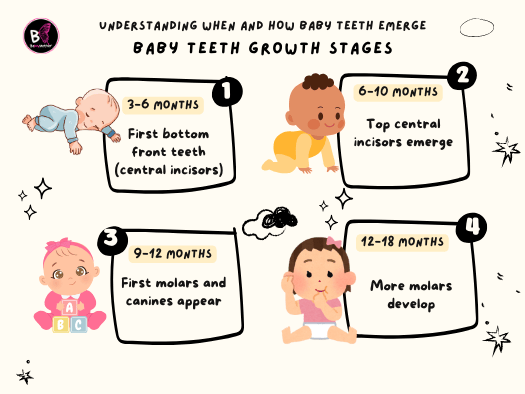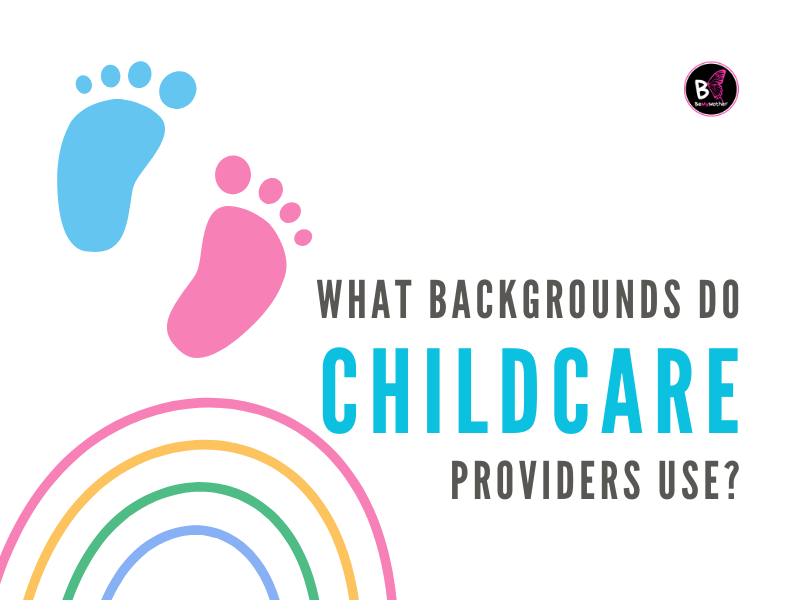📌 Quick Answer: A teething ring is a soft, chewable toy designed to relieve teething discomfort in babies. By applying gentle pressure on the gums, teething rings help reduce irritation and promote saliva production, which protects baby teeth from decay. Safe options include BPA-free rubber, silicone, and solid wooden teethers.
Introduction
Teething can be a difficult phase for babies and parents alike. Babies experience sore gums, drooling, fussiness, and a strong urge to chew on objects. One of the best solutions to ease their discomfort is a teething ring.
But when should you introduce a teething ring? Are liquid-filled teethers safe? How do you choose the best one for your baby?
In this article, we’ll cover everything parents need to know about teething rings, including safety tips, benefits, and the best options for your little one.
1. What Is a Teething Ring and How Does It Help Babies?
A teething ring is a specially designed toy made from safe, non-toxic materials that babies can chew on during teething. Its primary purpose is to provide counter-pressure to the gums, which can help alleviate the pain and discomfort associated with emerging teeth. Think of it as a mini massage for those sore little gums!
How does a teething ring work?
- Gentle pressure: Chewing on the ring reduces gum inflammation.
- Saliva production: Helps protect new teeth from decay.
- Safe alternative: Prevents babies from chewing unsafe objects.
🔍 Research Insight: The American Academy of Pediatrics (AAP) advises that teething rings can be effective in soothing a baby’s sore gums during the teething process. The pressure from chewing on a teething ring helps reduce discomfort and promotes gum relief. However, the AAP emphasizes using safe, non-toxic materials and avoiding frozen teething rings, as they can bruise a baby’s gums.
📖 Source: American Academy of Pediatrics (AAP)
2. When Can You Give a Baby a Teething Ring?

Babies typically start teething around 3 to 6 months old, making it the best time to introduce a teething ring.
Signs Your Baby Needs a Teething Ring:
- Increased drooling
- Gums that appear red, swollen, or sensitive
- A desire to chew on everything
- Increased fussiness or irritability
- Difficulty sleeping
- Loss of appetite
| Age | Teething Development | Best Teething Ring Type |
| 3-4 months | First signs of teething | Soft silicone or rubber rings |
| 5-6 months | First teeth start appearing | Chilled teething rings |
| 7-12 months | More teeth emerging | Textured or wooden teethers |
Safety Tip: always supervise your baby while using a teething ring, especially in the early stages, to ensure they can handle it safely. Early teething can be a challenge, but with the right tools and knowledge, you can help your baby through it with ease.
💡 Related Article: Curious about when your baby will start interacting with toys? When Do Babies Start Playing with Toys? 10 Fascinating Facts About Baby Playtime explains how playtime and teething relief go hand in hand.
3. Are Teething Rings Safe? Risks, Side Effects, and Precautions
While teething rings are safe when used correctly, some materials and designs can pose risks. Safety is paramount for anything your baby puts in their mouth. While teething rings can be incredibly helpful, it’s essential to be aware of potential risks and take necessary precautions.
Teething Ring Safety Checklist:
- ✅ BPA-free and non-toxic materials
- ✅ One-piece construction to prevent small parts from breaking
- ✅ Large enough to avoid choking hazards
- ❌ Avoid teething rings filled with unknown liquids
- ❌ No gel-filled or frozen teethers, which may cause frostbite
🔍 Research Insight: A study published in PMC highlights that while teething rings can relieve irritability and discomfort during teething, parents should be cautious about the materials used in these products. It is essential to avoid teething rings that contain harmful substances or pose choking hazards.
📖 Source: PMC
4. What’s Inside a Teething Ring? Understanding Liquid-Filled vs. Solid Teethers
There are three main types of teething rings:
| Type | Description | Safety Consideration |
| Solid teething rings | Made from silicone, wood, or rubber | ✅ Safest option |
| Water-filled teething rings | Filled with purified water | ✅ Can be chilled but should never be frozen |
| Gel-filled teething rings | Contains gel or liquid | ❌ Risk of leaks or contamination |
Proper cleaning and care are essential for all types of teething rings. Wash them regularly with warm, soapy water and sterilize them as needed. For liquid-filled teethers, check for any signs of damage before each use.
🔍 Research Insight: The NHS recommends cooling teething rings in the refrigerator (not freezer) to help reduce gum inflammation.
📖 Source: NHS
5. Natural Remedies vs. Teething Rings: Which Is Better?
5 Baby Teething Remedies That Actually Work
While teething rings are popular, many parents also explore natural remedies to soothe their baby’s teething pain. So, which is better? The answer often lies in a combination of both. But which option is better?
✔ Teething Ring Benefits:
- Safe, non-toxic relief
- Durable and reusable
- Encourages self-soothing
✔ Best Natural Remedies:
- Cold washcloth – Provides similar relief as a chilled teething ring
- Frozen fruit in a mesh feeder – Soothes gums while providing nutrition
- Chamomile tea rub – A natural anti-inflammatory for sore gums
Which is better? A teething ring is the safest and most convenient option. However, natural remedies can be great additional relief methods. The best approach is to observe your baby’s cues and try different methods to see what works best for them. Safe home remedies, combined with the use of a teething ring, can provide comprehensive relief.
💡 Related Article: Looking for natural ways to soothe your teething baby? Is Celery Good for Teething Babies? 7 Surprising Facts Parents Should Know explores whether this crunchy veggie can provide relief and how it compares to teething rings.
6. Teething Timeline: What Order Do Baby Teeth Come In?

Understanding when and how baby teeth emerge helps parents prepare for teething challenges.
Baby Teeth Growth Stages:
| Age | Teeth Appearance |
| 3-6 months | First bottom front teeth (central incisors) |
| 6-10 months | Top central incisors emerge |
| 9-12 months | First molars and canines appear |
| 12-18 months | More molars develop |
When to stop using a teething ring? Once your baby has most of their teeth (around 12 to 18 months) and isn’t showing signs of teething discomfort anymore, you can gradually stop using the teething ring.
💡 Related Article: Recovering from childbirth while navigating your baby’s teething journey? Hernia After Pregnancy: 12 Crucial Facts Every New Mom Should Know discusses postpartum changes that could affect how you care for your little one during this challenging phase.
7. Choosing the Best Teething Ring: What Parents Need to Know

With so many choices, picking the best teething ring can feel overwhelming. Here’s what to look for in a good teething ring:
- Material: Choose BPA-free and non-toxic materials like silicone or natural rubber.
- Design: Pick a design easy for your baby to hold and chew on, with no small parts that could come off.
- Durability: Select a teething ring that can handle a lot of chewing and cleaning.
BPA-free and non-toxic materials are essential for your baby’s safety. You should also avoid puppy teething rings and stick to well-known baby brands that have been tested for safety.
🔍 Research Insight: WebMD emphasizes that parents should look for BPA-free and non-toxic materials when selecting a teething ring. The design should also be safe for infants, avoiding any small parts that could pose choking hazards.
📖 Source: WebMD
💡 Related Article: Considering a career in childcare? What Is Required to Be a NYS Child Care Worker? 10 Key Steps to Unlock Your Dream Career breaks down the essential qualifications, including knowledge of teething stages and baby care.
FAQ Section: Common Questions About Teething Rings
Q1: When can I give my baby a teething ring?
A1: When early teething symptoms appear, babies can start using a teething ring around 3 to 4 months old.
Q2: Can my baby sleep with a teething ring?
A2: No, babies should not sleep with a teething ring due to the risk of choking or suffocation.
Q3: What liquid is inside teething rings?
A3: Some contain sterile water or gel, but experts recommend solid silicone teethers to avoid leaks or contamination.
Q4: How do I clean a teething ring?
A4: Wash with warm, soapy water and sterilize if heat-safe. Some can be boiled, while others should be wiped clean.
Q5: When should I stop using teething rings?
A5: Most babies no longer need a teething ring once their molars are in (12-18 months).
Q6: Do babies really need teething rings?
A6: Teething rings are not mandatory, but they provide safe and effective relief for teething discomfort. Natural remedies can also help.
Conclusion
Teething can be a challenging time, but with the right knowledge and tools, you can help your baby through it more easily. A teething ring can be a useful tool, providing safe and effective relief for sore gums. Remember to prioritize safety by choosing BPA-free, non-toxic materials and supervising your baby while they’re using it. By knowing the different types of teething rings, recognizing the signs of teething, and exploring natural remedies, you can create a well-rounded approach to managing your baby’s teething pain.



